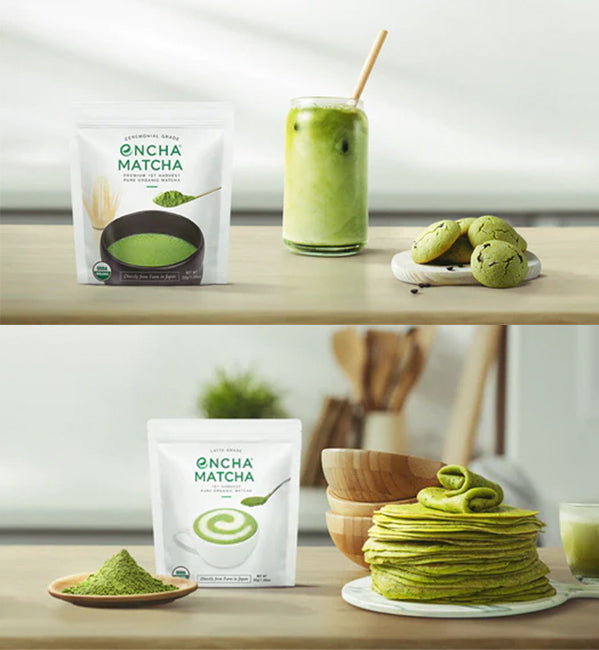Grades of Matcha Tea
Depending on the quality of the leaves used and the powder obtained, matcha can be subdivided into three main grades: ceremonial, latte, and culinary. Let’s look at these grades below.
- Ceremonial matcha - Ceremonial matcha is created from the highest-quality first-harvest leaves and is designed to be drunk with water only. Traditionally, it is used in Japanese tea ceremonies.
- Latte-grade matcha - Latte-grade matcha is made from high-quality, first-harvest leaves and can be used in the preparation of hot drinks with other ingredients, such as matcha latte.
- Culinary matcha - Culinary matcha is often made of premium second-harvest leaves, which can be used in cooking and baking.
Japanese vs. Chinese Matcha Making
The process of making matcha in both China and Japan shares some similarities but also exhibits distinct differences. What are the differences between Japanee and Chinese matcha making? Here are the key variations between Chinese and Japanese matcha making process and how it affects taste:
1. Cultivation and Shade-Growing:
Japanese Matcha: In Japan, matcha is typically produced from tencha, which are tea leaves grown in the shade for several weeks before harvest. This shading process enhances the leaves' chlorophyll content, resulting in a vibrant green color and a sweeter flavor profile.
Chinese Matcha: In China, matcha is often made from a variety of tea leaves, not limited to shade-grown leaves. The shading process is less common, and there is more diversity in the types of tea leaves used for matcha production.
2. Processing and Grinding:
Japanese Matcha: Japanese matcha production emphasizes meticulous processing, including steaming, drying, deveining, and grinding the tea leaves into a fine powder. The grinding process is typically done with stone mills, resulting in a very fine and smooth matcha powder.
Chinese Matcha: Chinese matcha processing methods can vary by region and producer. Some Chinese matcha is processed similarly to Japanese matcha, while others may have differences in deveining and grinding techniques. The particle size and texture of Chinese matcha may vary more widely.





